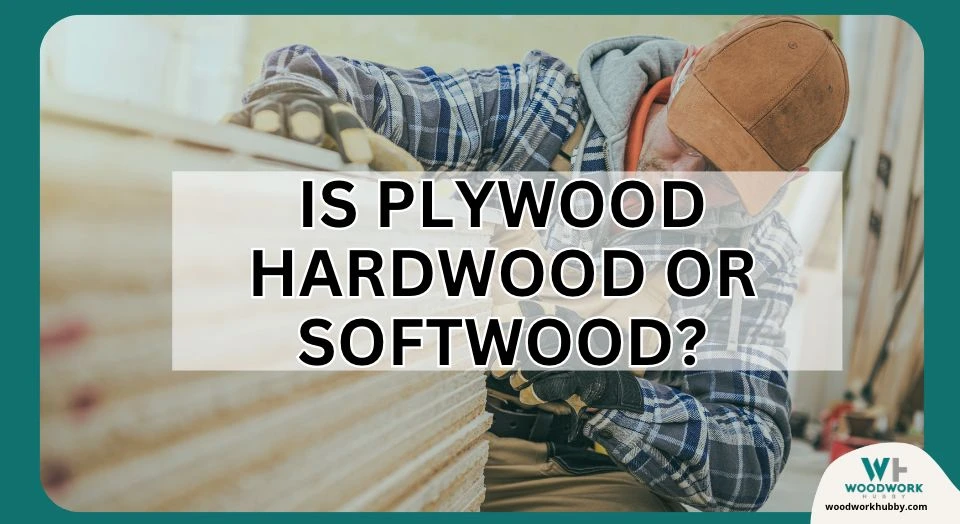Earlier in my woodworking journey, I tried not to use plywood because the guidelines around where I could use it were so vague and I always had the question: is plywood hardwood or softwood? So, whenever a project of mine required hardwood or softwood, I didn’t know whether it was okay to use plywood. With enough experience, I learned the answer.
Generally, plywood can either be hardwood or softwood. You will commonly find that construction-grade plywood mimics hardwood, while cabinet-grade plywood is made from softwood. Plywood can be made from hardwood and softwood sources.
In this article, you’ll learn all you need to know about different types of plywood that can be used in place of hardwood and softwood. By the end of this short post, you’ll be confident about whether plywood fits a specific project or not. The confidence that I wish I had at one point.
Now that you know that both hardwood plywood and softwood plywood exist, you can make better buying decisions for your specific projects. You should use softwood ply for a project where the boards don’t have to bear a lot of weight. For projects where the boards are horizontal and placed at the base, you’re better off using hardwood plywood.
Softwood ply remains the common type of plywood, and its ability to carry weight in cabinets and shelves is quite surprising. It is usually the solidified adhesive that lends it more strength than the lumber contents.
Is Plywood Considered Hardwood?
Plywood is not considered hardwood but can be made to have just as much strength. For plywood to have hardwood strength, it must be made from a hardwood source like oak or maple. More importantly, it must feature the right adhesive that doesn’t buckle or melt under pressure.
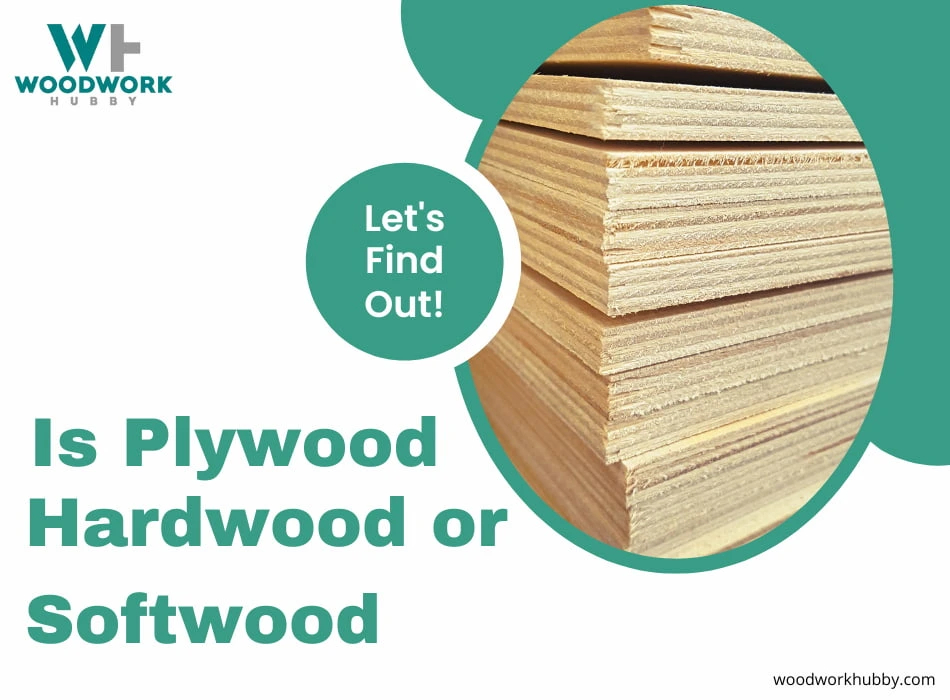
The strength of the adhesive is as important as the hardwood source when you make hard ply. Plastic Resin Glue (Urea Formaldehyde) with a very high curing temperature is used to create hardwood plywood. The boards can undergo further pressure-resistance treatment if required, but often, hardwood plywood is strong enough for average practical situations.
The treated varieties are even more durable in aspects other than the weight they can hold. Pressure-treated plywood is less likely to decay, for instance. But this isn’t specific to hardwood plywood only. It’s just that if you use hardwood lumber for your plywood, you should want to pressure treat and protect it more since it is more expensive.
Is Plywood Considered Softwood?
Common plywood can be considered softwood as it is made from softwood material like cedar and has a similar strength to the average softwood board of equivalent thickness. Plywood boards can be stronger or weaker than softwood based on the glue that holds the wood fibers together.
The size of the individual fibers matter as well. It might seem like bigger fibers make plywood stronger, but that’s not true. The smaller the wood fibers in plywood, the stronger the board. Think about OSB. An Oriented Strand Board is relatively weak because the strands are much larger than plywood fibers.
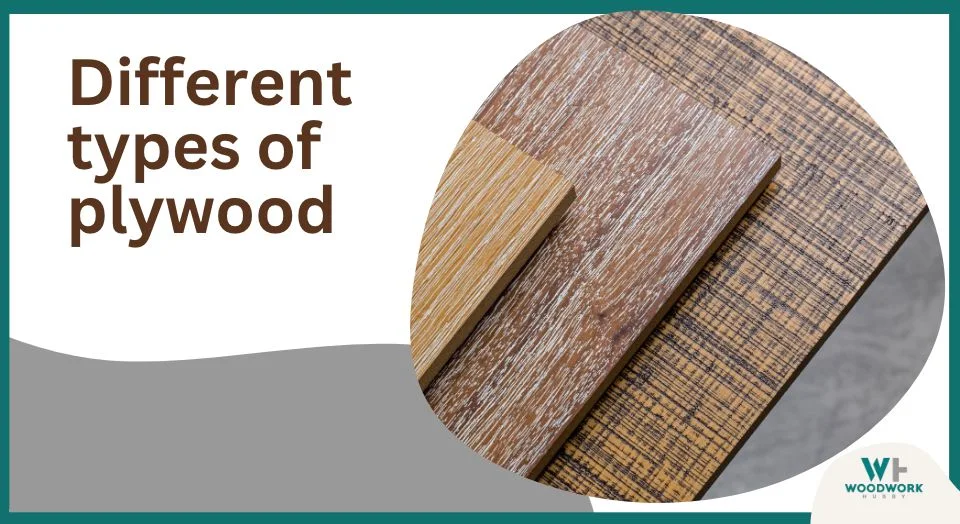
Softwood plywood makes up the bulk of the plywood used in building and home improvement projects. This indicates that cedar, pine, and Douglas fir or spruce, what’s often known as SPF (spruce-pine-fir) make up the front and back veneers.
If you make plywood at home, the wood fibers will not be as small as the average plywood in the market. You’ll save money on glue, though, because the smaller the ply fibers’ surface area, the less adhesive they need.
Moreover, you can use almost any homogenous (same type) lumber left over from your other projects to make plywood. This means the process is quite cost-effective.
The most significant disadvantage of this cost convenience is that your homemade plywood will be much weaker than the average softwood. It might be used for lightweight projects but will not be able to compete with standard plywood applications.
Are you considering using OSB or plywood for your shed roof? Find out which is best! In this post, I go through everything in detail and offer some useful videos.
Hardwood vs Softwood Plywood
Most plywoods are divided into the following:
- Softwood Plywood – Is usually made from softwood such as cedar, Douglas fir or spruce, pine, fir, or redwood and is typically used for construction and industrial purposes.
- Hardwood Plywood – Made from hardwood, often from birch, and used for demanding end users.
- Tropical Plywood – Made from mixed species of tropical woods/
- Special purpose Plywood. These include:
- Aircraft plywood
- Decorative plywood (overlaid plywood)
- Flexible plywood
- Marine plywood
- Fire-retardant plywood
- Moisture resistant plywood
- Sign grade plywood
- Pressure treated plywood
What Kind of Wood Is Plywood?
Plywood, in general, is a wood board made from softwood. Wood board is not solid wood but is made from wood fibers held together by an adhesive. As a result, sawing, burning, and drilling into plywood can have consequences that doing the same with natural wood doesn’t.
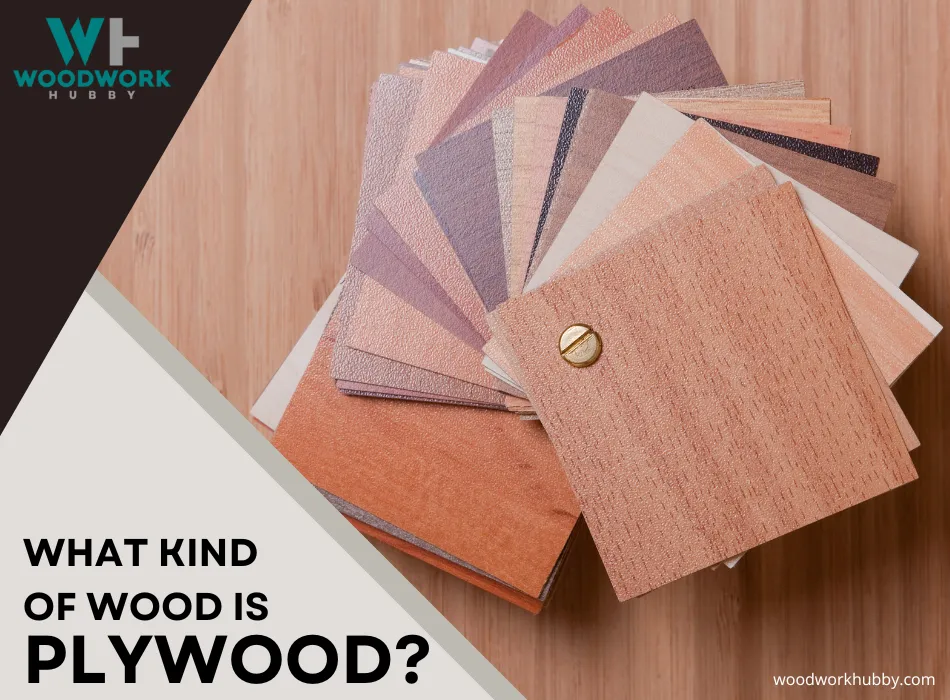
Urea Formaldehyde is the adhesive used in these boards. Whenever you’re modifying or shaping plywood, you should not see it as wood but as a board made from Urea Formaldehyde. So the question shouldn’t be whether you can burn softwood or even plywood but if you can set Urea Formaldehyde on fire. You can’t.
Because of the way plywood differs from softwoods and hardwoods, you cannot:
- Saw into it – This forms solidified resin sawdust. Even if you use a respirator to keep yourself safe while the dust is airborne, you shouldn’t see plywood because it can ruin your sawblade.
- Drill into it extensively – While minimal drilling has minimal consequences, especially if you use a respirator, making too many holes in plywood can have similar effects as sawing.
- Burn it – Burning plywood entails burning the adhesive that holds the ply fibers together. This results in toxic fumes that can be fatal in the short term and dangerous to the environment in the long run.
- Use it as firewood – You cannot use plywood as firewood for the same reason you cannot burn it as a way of discarding it.
- Let it sit in the sun – While natural wood can shrink and expand based on its placement in or out of the sun, plywood hyper reacts to sunlight. The glue in plywood can melt and expand, then cure back, leaving a deformed board. You need to apply a protective finish or paint over plywood to prevent this.
Is Plywood Stronger Than Wood?
On average, plywood is stronger than wood when it comes to resisting bending forces. Wood can withstand compression better than plywood. Hardwood plywood is stronger than softwood lumber of equal thickness. And softwood plywood might be weaker than most hardwoods and certain softwoods.
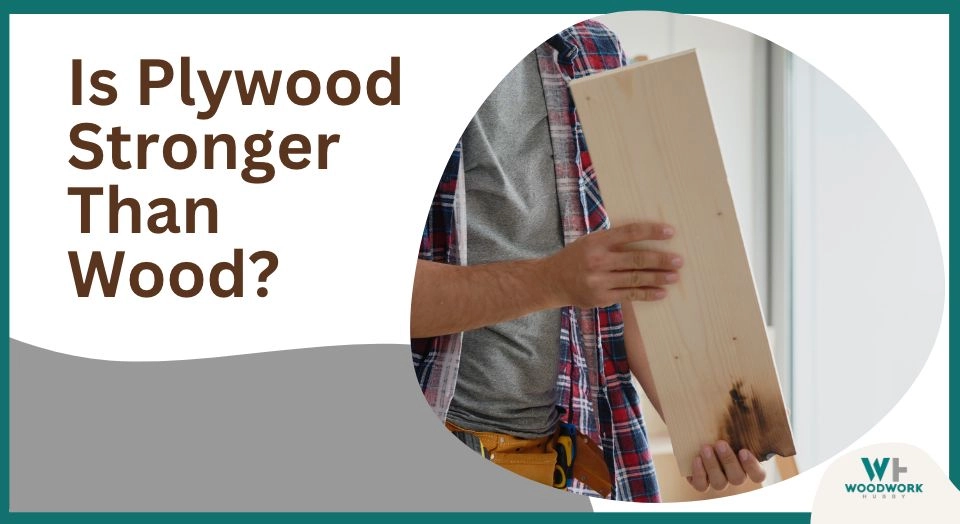
Plywood boards should be used in proportion to their strength. You can avoid having to take down your entire project because of improper plywood placement by assuming your plywood is weaker than the average lumber.
Alternatively, you might want to invest in a pressure strength tester. It can help you determine the exact weight that a plywood board can bear. But in my opinion, the tool isn’t worth it for most woodworkers. It is far more practical to underestimate your plywood by a healthy margin.
Is Plywood Strong?
Plywood is very strong given its thickness and nature of manufacture. 3/4 inch (19mm) plywood is used in flooring to span up to 450mm and has great strength characteristics.
In my experience, it takes quite a lot of force to break plywood. I would certainly consider it on your next project.
Final Thoughts – Is Plywood Hardwood or Softwood
You should use plywood wherever it has the capacity to carry the weight necessary for the project. Cabinet-grade plywood is obviously best for cabinets but can be used for medium-tier projects.
Hardwood plywood is much tougher and can be used in place of softer hardwoods in any project where sawing isn’t required.
FAQ
Can I Put More Plywood On Top of My Plywood Shed Floor to Strengthen It?
Additional sheets of plywood can be added to a floor to strengthen it. It is recommended you use 3/4″ (19mm) plywood on a floor. Be sure to check the structure under the floor to ensure that no bearers have rotten wood.
Be sure to check out my full article on the best plywood for shed roofs.
What Is Cheaper, Hardwood Boards, or Plywood?
Plywood is much cheaper than natural wood or hardwood boards. Real wood is becoming more and more expensive due to the lack of supply. It is also becoming a sort after material.
A Hardwood board that is 6 feet (1.8 meters) x 12 inches (300mm) wide x 1 inch (25mm) thick, could sell for upwards of $40. You could buy a full sheet 8×4 (2400 x 1200mm) for just a little more.
Admittedly, the hardwood board is thicker but you can only buy them that wide in certain places.

